The X Button
Sweet Somethings
by Todd Ciolek,

Shantae came a long way. Ten years ago she was the star of a good but under-appreciated Game Boy Color game. Five years ago she was the star of a good-looking but unreleased Game Boy Advance game. Now she's the star of an upcoming 3DS game and a new Kickstarter drive for another game entirely, a reboot called Shantae: Half-Genie Hero.

Half-Genie Hero reintroduces Shantae with a slightly simplified design and a new story. It includes just about every aspect of the older Shantae titles, from belly-dancing magic to a zombie named Rottytops, and developer WayForward openly pines for a breakthrough on consoles and PCs. Should the Kickstarter lock in the funds, they've already arranged to publish the game on Steam, the Wii U, the PlayStation 3 and 4, both Xbox platforms, and the Vita.
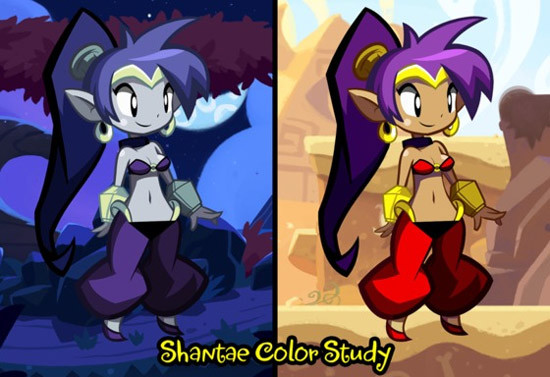
WayForward also stirred up a little controversy when some fans noticed that Shantae's Half-Genie Hero incarnation had noticeably lighter skin than the heroine seen in prior games. These complaints led to some swift explanations on WayForward's part: the Shantae seen in the Kickstarter was one artist's interpretation. All of the new Shantae art shown since then gives her a more consistent tone. The fuss died down as swiftly as it began.
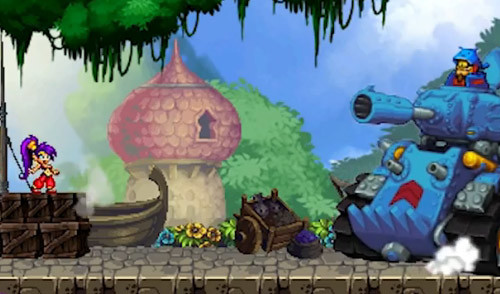
This new Shantae venture shouldn't be confused with Shantae and the Pirate's Curse, which has a new trailer and one of those nebulous later-this-year release dates. Following the storyline of previous games, the latest sees Shantae taking on a pirate's trade during a search for her lost genie powers. If all goes right, we'll see two Shantae games within a year's time. That ain't bad.
NEWS
TRAILS TRILOGY TROTS TOWARD TOTAL TRANSLATION
Any fan of any kind of Japanese game learns to accept that certain things just get away sometimes. Even in this era of efficient and timely localizations, there remains a depressing panoply of promising titles that aren't translated: Ace Attorney Investigations 2, EX Troopers, Retro Game Challenge 2, and at least a dozen others. Trails in the Sky: Second Chapter was once in this category; XSEED released the first chapter of the RPG in 2011, but the second proved elusive. It was perhaps too long, too heavy with text, too much the middle act of a series that might not profit enough to justify the finale's translation. Well, set those worries aside. XSEED will release the second leg of Trails in the Sky next year, and the folks at Carpe Fulgur, home of Recettear and Chantelise, will localize it.
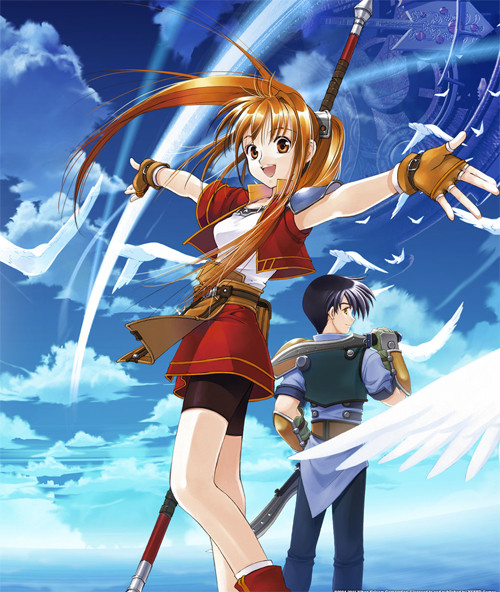
The first leg of Trails in the Sky introduced Estelle Bright and her stepbrother Joshua, two young Bracers (basically government-backed mercenaries) who uncovered disturbing truths about their kingdom, Joshua's past, and Estelle's highly respected father. All of these plot arcs lead directly into the second part of Trails in the Sky (please don't abbreviate it), with a third and final game also looming unlocalized. It's all one sub-series in Falcom's Legend of Heroes franchise, which hasn't had the best luck on these shores. Namco Bandai released the earlier Gagharv sub-trilogy for the PSP, and its generic confines won over few RPG enthusiasts. Yet Trails in the Sky: First Chapter claimed many devout fans, and they're quick to tell you that the game's much better than its seemingly standard appearance.
Like the first act of Trails in the Sky, Second Chapter is a massive undertaking, and a post by Carpe Fulgur's Andrew Dice estimates that the game's central storyline (not including any side avenues) is longer than the whole of Recettear's script. Unverified fan estimates even have it that the game's word count rivals the combined first twelve books of that insufferably long-winded Wheel of Time fantasy series. For those curious, the first chapter of Trails in the Sky is available on the PlayStation Network for twenty bucks, and XSEED plans to issue it on Steam later this year. Trails in the Sky: Second Chapter will see digital releases on Steam and the PlayStation Network in 2014. I suspect it'll be more enjoyable reading than The Wheel of Time.
SONY SHRINKS VITA IN TWO WAYS, PHANTASY STAR RETURNS YET AGAIN
Remember how the Vita just kinda sat to the side and thumbed through a magazine during Sony's big presentation at E3? Well, the deprived handheld got some attention in Sony's recent press conference, which revealed two new versions of the system. One is just a redesign: it's thinner, lighter, lasts longer off a full charge, comes in six colors, and costs about $200 in Japan.

The surprising new incarnation is the Vita TV, a tiny little box that connects to televisions and runs all most Vita games as well as digital PSP and PS One titles. It obviously lacks the Vita's touch-screen, but it accepts Vita cartridges, memory cards, and PS3 controllers. It's also outfitted for Wi-Fi, HDMI output and streaming, while the $100 entry price positions it as Sony's low-cost, easily transported alternative to a larger console or a single-player handheld. It's the PlayStation version of those little plug-and-play joysticks you see at Toys R Us and flea markets, promising thousands of NES games inside. With the Vita TV, at least its library isn't mostly the same bootleg version of Crush Roller.

What does this mean for the Vita? Well, you'll see far fewer games that use the system's touch-screen or rear panel. Yet that little TV-connected rectangle gives developers a new venue for their Vita titles, and the upcoming Tokyo Game Show might bring them out. In fact, the Vita TV already changed one mind: WayForward's Kickstarter for Shantae: Half-Genie Hero added the Vita TV to its planned lineup of supported systems.
It also means that current Vita owners paid about sixty bucks to play Gravity Rush a year and a half ahead of the more sensible later adopters. And that was good enough for me.
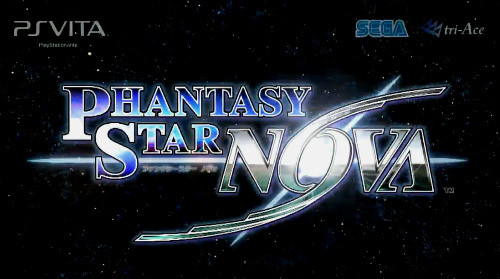
In other Vita news, Sega announced Phantasy Star Nova. It's set in the same galaxy/universe/solar system as Phantasy Star Online 2, and it will invite single-player campaigns as well as ad-hoc multiplayer. It's made by tri-Ace, which makes a strange sort of sense. The space-opera Star Ocean series remains tri-Ace's central series, and the developer's been hiring itself out all over the place in the last few years. Will this new Phantasy Star conclude with the revelation that the entire series is a virtual playground controlled by another reality? Well, the ending of Phantasy Star II already did something like that.

Lastly, Idea Factory and Otomate debuted a Vita spin-off in their Hakuoki series. Previous games unfolded in a demon-threatened version of mid-1800s Japan, but Hakuoki: Sweet School Life takes place at that other favored cliche of games and anime: a modern high school. The dashing men of the Shinsengumi are now students at an all-male school that's just decided to admit a girl, and this new student is series heroine Chizuru Yukimura. It's out next spring in Japan, and fans can pester Aksys about releasing it here, as the publisher will do shortly with the 3DS port of the original Hakuoki.
GUILTY GEAR XRD REVEALS PLAYSTATION VERSION, ALLEGED CONCEPT ART REVEALS EVEN MORE
In the department of News That Matters A Whole Lot to Me, Arc System Works released a new trailer for Guilty Gear Xrd -Sign-. The game is now headed to both the PlayStation 3 and the PS4 next year, and that trailer shows Axl Low and I-No returning for the new game.
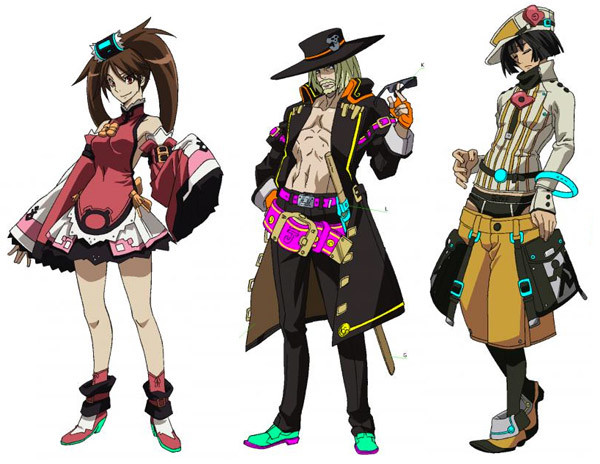
All of this was upstaged when someone leaked a big stack of purported concept art for a Guilty Gear game. Evidence suggests it's all for a pachislot title and not Guilty Gear Xrd, but it may well be a look at where the series is headed. The images show several major Guilty Gear characters in redesigned form; some, like Kuradoberi Jam (right), look about the same, while Johnny (center) gets a beard and Zappa (left) a new outfit. The art also includes some of pirate-girl May's crew, the recurring antagonist known as That Man, and the new characters from Guilty Gear 2: Overture. Except for Valentine, because…well, you know.

Most intriguing are the illustrations of seemingly new and important characters: a trenchcoated guy sprouting dragon heads from his back, various monsters, and the above-pictured cat-tailed woman and fur-caped cyclops bounty hunter. I must stress that all of these are not confirmed to be official materials and, even if they are, may not carry over to Guilty Gear Xrd . Yet I hope a lot of it reflects what we'll see in Guilty Gear Xrd. I'm holding out for a playable version of Janus, the pirate cat.
INTERVIEW: AKSYS GAMES' BEN BATEMAN
We hear an awful lot about the game industry's penchant for imitation and recycling. However, you may rest assured that Sweet Fuse: At Your Side is, in fact, the only game where players guide the heroine and many handsome sidekicks as they rescue game creator Keiji Inafune from a theme park gone deadly.
Sweet Fuse is also an “otome” game, a visual novel implicitly made for female players, and it's possible for Saki Inafune, the outspoken protagonist, to romance her attractive co-stars. It's the sort of title rarely localized for North American consumption, but it's increasingly familiar ground for Aksys Games. The publisher ventured into the genre last year with Idea Factory and Otomate's Hakuoki: Demon of the Fleeting Blossom for the PSP, and last month the same team-up delivered Sweet Fuse as one of the system's last (if not the last) retail-shelf releases. We met with Aksys Games Localization Editor Ben Bateman to find out just what's behind the game.
How do you decide to localize games like Hakuoki and Sweet Fuse?
Ben Bateman: Sometimes they'll come to us, and sometimes we'll meet people at Tokyo Game Show and ask them. Usually we get a copy of the game, we look at it, we decide what we like about it and what we don't like about it. We figure out if we want to do it or not, and we get in touch with the company that has it.
So what did you like about Hakuoki?
It has a very heavy element of political intrigue in addition to a fair amount of supernatural-type stuff going on. There's also an epic feel to the story. There are big, important things going on, and you're there while they're happening. When you take different paths, you can see the events and the big, interesting cast from many different perspectives.
What interested me particularly was that era of history. You had the samurai class, who were at the top of the heap in a lot of ways. Then the Edo period ended and that changed a ton, primarily with the advent of firearms. Basically, you're getting to see the last gasp of that samurai ideal on top of a fairly interesting story.
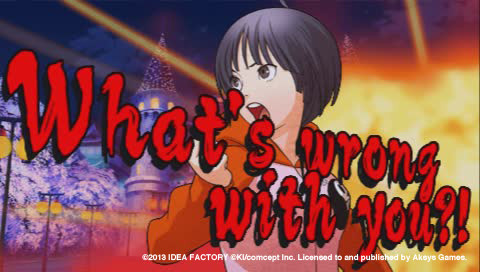
And what about Sweet Fuse?
It was Saki, the protagonist. She's a firecracker. She's fun and she's upbeat, but she doesn't take crap from people. She's very proactive about doing stuff. I also really like the character art, and there are little touches like the characters' mouths being animated when they speak.
In Sweet Fuse, Saki is the niece of real-life game producer Keiji Inafune. How'd you handle his dialogue compared to localizing, well, an entirely fictional person?
Well, Inafune doesn't talk a ton, so he was easy to deal with. Mostly for him, I left his dialogue the way it was. When you're dealing with real person, it starts to feel like you're putting words in his mouth if you change too much.
I mostly did the same thing I always do: I'll look at the characters and try to figure out what they're about, how they think and how they might talk. I'll make notes about that and work through how they sound in my head, word-choice-wise. To a certain extent, I'll see how they evolve and how they go through it.
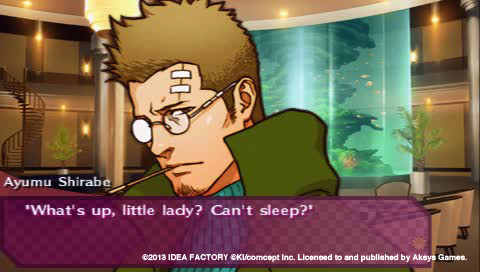
How do you find the right voice for a character? Did you look to certain other games or movies or books for the characters in Sweet Fuse?
It depends on the game. Shirabe in Sweet Fuse is supposed to sound a little like Hunter S. Thompson in Fear and Loathing in Las Vegas. That didn't really come across, because a lot of that voice is the delivery of the lines in that movie, but he's a journalist so it's an interesting sound for him.
For the other characters, I didn't take a lot of inspiration from other sources, but Shidou probably has a little bit of Christopher Meloni from Law and Order: SVU, because I watched a lot of that show and Detective Stabler's pretty dreamy [laughs].
Which would you say was harder to localize, Hakuoki or Sweet Fuse?
Probably Hakuoki. Sweet Fuse is set in a word that is ostensibly our world, so you're free to be a lot more colloquial about that. These people are people who exist today, so they don't have to sound like anything. I still did Hakuoki in a sort-of-colloquial way, but you still have to think about the period in which it takes place. If you have someone saying something like “it grinds my gears”…well, they don't have a lot of gears. In Sweet Fuse, you don't have to worry about period restraints as much.
Saki has something like a Phoenix Wright ability, where she calls up the words “What's Wrong With You?” to fill the screen. Do you think Sweet Fuse has more emphasis on puzzles and action than the typical visual novel?
Those words pop up at certain points in the game when you're trying to solve one of the puzzles or someone does something wrong. There's a part at the beginning of the game where Shidou grabs you and tells you not to touch something “because you're a woman” and she says “Well, that's sexist BS” and yells at him. You have the opportunity at those points to yell at someone or keep your mouth shut, and depending on which one you do, you'll get different story paths and different reaction. There are one or two cases where you'll get a game over if you don't get mad, but whichever one you pick will affect a particular dude's romance level with you. It's not as interactive as Phoenix Wright.
And would you say that the game's various love interests prefer Saki getting mad and having a mind of her own?
From what I recall, the vast majority of the time a correct response is to get mad. You usually do it because someone else is doing something dumb and you otherwise wouldn't be able to advance.

When Sweet Fuse was first announced, jokes were made about how the game showed Inafune, who left Capcom in 2010, as a benevolent figure kidnapped by a villain called Count Hogstein. Some people thought Hogstein symbolized Capcom. Did you get that impression, or is it a coincidence?
I think that's mostly a coincidence. Because of the way Hogstein plays into the story, I don't think he's supposed to be any sort of allegory for that. There are one or two things he says during the beginning that could be taken as a dig at something like that, but as for his place in the story…I don't think so.
It's said that “otome” games like Hakuoki and Sweet Fuse are aimed foremost at female players. Do you think that's true for the audience they find over here?
I know that the audience isn't exclusively female. I've seen a number of guys talk about playing them, especially with Sweet Fuse. I feel that the otome games are primarily being played by women. It may have something to do with the subject matter, but it's also that people see something called an “otome” game and run off assuming that it's not for them. I think that because it's played up as “games for women” and “it's about romance” there are guys who get turned off by that. And I think that's a bit of a mistake. You can definitely enjoy them. They're not one-hundred-percent bodice-ripper romance. I think a lot people would enjoy them if they gave them a shot. The more we bring out, the more they're in the public consciousness, so I hope more and more people will play them.
Do you think the popularity of otome games is a recent thing in Japan?
I don't think they're necessarily on the rise. They've been popular for quite a while. Idea Factory makes a ton of them, and so do other companies. I think that with Hakuoki, the more mainstream game audience in the U.S. is just becoming more aware of them.
How would you compare the mainstream appeal of games like Sweet Fuse and Hakuoki to visual novels that ostensibly are made for guys? Is there a certain suggestive element that turns off mainstream players?
Well, I don't have a ton of experience with the male-oriented dating-sim type of game. I think they do have a reputation in the West for being explicitly porn or kind of porny in some way. Whether or not that's deserved at this point, I'm not really qualified to say.
I do think otome games are marketable because, to a certain extent, they address a very underserved market—that is, women playing game. I do think there are people who would buy the visual novels for men, too. But both of them are appealing to a niche of people who are interested in visual novels. I think it's a reasonably sized group and I think it's growing, but it's still not real huge. I feel that part of the reason we're getting into that otome market is that there are already a lot of games made for men in that eighteen-to-twenty-four demographic.
From what I've seen of dating games for men, I would not be super-inclined to do them personally, because the subject matter is handled a little weird. And other things. But I don't think it's impossible, and there are already a number of companies that bring over things like that.

And what do you think is the appeal of visual novels in general?
I think the primary appeal is that people want good stories, and visual novels fill a really interesting niche because they're not quite a book or a TV show or a comic book. I think you feel a larger sense of involvement in the story. Even if there isn't a lot of interactivity, it involves you and invests you in the story in a way that other media really can't get to because you're having a direct effect on what the story is. It feels a bit more transparent than a Choose Your Own Adventure Book where it's like “if you choose to run, turn to page forty-six.” That's making you do all the work, and you can always look ahead.
A lot of visual novels have multiple routes, and that lets you uncover mysteries and learn more about the world and the characters. In a normal book or a comic, you read through it and it's done. But in a lot of visual novels you can go back and find out what happened if, say, you went left instead of right. It's a more immersive story in a branching world. You can contrast it with other games, because the visual novel allows you have stories and characters and worlds that deal with a ton more stuff than you could do in a game that wasn't as focused on narrative.
Why do you think visual novels have done so well on handhelds?
One reason is that handhelds are super-popular in Japan. The PSP never caught on here, but everyone in Japan has a PSP. Also, I think that it's more of the way things are in Japan. People spend a lot of time commuting, and houses are often very small. It's not like you have an entire room where you can set up your television and play video games for five hours. So handheld consoles were just a lot more attractive, and people started developing a lot of for them. I have a feeling that a lot of these companies have written a visual-novel engine for the PSP, so they can keep creating new content for it. It's less viable here because fewer people bought PSPs, and the Vita's been out for a while.
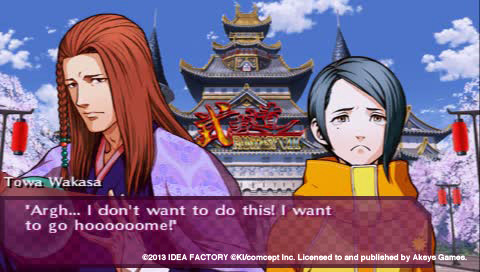
How do you see the Vita changing visual novels as they migrate there?
You'll probably see some games that take advantage of it, but I think a lot of visual novels will stay much as they are on the PSP. I think part of the attraction of a visual novel is that the development and production are much more simple and straightforward compared to other genres. The creation process is relatively cheap. I get the impression that a lot of companies that make visual novels aren't really equipped to handle development that's all that complex. We might see some games that do really interesting new things, and maybe that'll catch on. But I don't know.
Does Aksys plan to bring out any visual novels for consoles?
It's something to consider. Playing stuff on the console has the advantage of watching it on a much nicer screen. For us, it really depends on what developers do.
Are there any other Otomate games or visual novels you'd like to bring over, like Princess Arthur?
I've see a few people mention that one, and there's a Hakuoki prequel that looked kinda cool. And there's a couple others from other companies that I thought were kinda neat. But there's a ton of otome games out there.
Is there anything you look for in terms of characters, settings, or subject matter?
Personally, I'm more interested in the ones that have interesting, proactive protagonists and anything that has an in-depth setting. There's a series called Black Wolves Saga that's super-dark, but they have this interesting setting with quasi-medieval politics.
Of all the love interests for Saki in Sweet Fuse, which one did you like the best?
Well, I really liked Mitarashi. And Meoshi's pretty cool. They're probably my favorites. Meoshi's ending was pretty adorable, too. He's the gamer type with the long hair.
And he's wearing…a straitjacket, is it?
Yeah. [laughs] They never explain that, unfortunately.
NEXT WEEK'S RELEASES
THE WONDERFUL 101  Developer: Platinum Games
Developer: Platinum Games Publisher: Nintendo Platform: Nintendo Wii U Release Date: September 15 MSRP: $59.99 Hideki Kamiya and Atsushi Inaba probably won't make a Viewtiful Joe game again. They've long since left Capcom, co-founded Platinum Games, and crafted action titles like Bayonetta and Vanquish. Yet they haven't forgotten Viewtiful Joe's plethora of superhero sendups, and that's where The Wonderful 101 starts out. It follows a hundred-strong cadre of masked do-gooders, some denoted by color and stereotyped nationality, as they fend off an alien invasion. It isn't just the heroes who fight, though. As they race through the streets of Blossom City, the superhero team, initially named the Wonderful 100, deputize normal citizens into masked followers, and soon the player commands a gaggle of superheroes. At the direction of a lead superhero, the group can temporarily morph into giant glowing energy weapons: fists, swords, handguns, handgliders, grappling whips, bombs, hammers, and so on. The repertoire expands well past the typical action game's arsenal, and the player controls it all by swiping out various shapes on the Wii U controller. The Wonderful 101 has something else going for it: it's a damned happy game. Platinum's titles haven't been terribly serious, but they're always tempered by violence. There's not much genuine merriment in the carnage of Anarchy Reigns or the trashy allure of Bayonetta. The Wonderful 101 is a brighter take on Kamiya's style, like flipping through a hundred different superhero funnybooks all at once. Early reviews scorn the game's lack of tutorials, suggesting that it's a difficult slog at time. But at least it promises to be a cheerful slog.
|
Some game called Grand Theft Auto V arrives for the PlayStation 3 and Xbox 360 as a regular release as well as a special steelbook edition with new weapons, outfits, and a real rolled-up map. There's also a pricey GameStop collector's edition with a hat, a T-shirt and even more in-game extras. I guess this is a popular series or something. First I've heard of it.
discuss this in the forum (32 posts) |
this article has been modified since it was originally posted; see change history